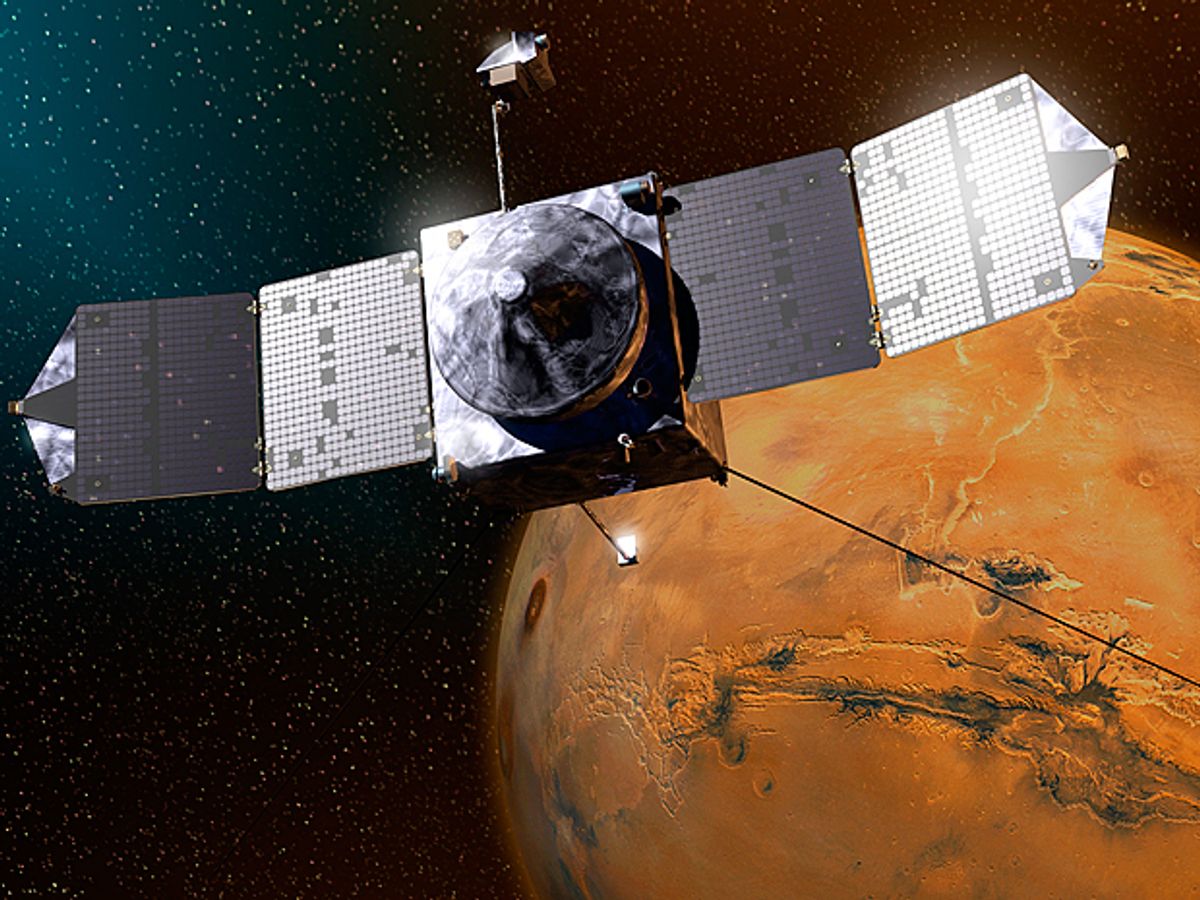September has shaped up to be a very exciting month in the annals of Mars exploration. Two new spacecraft, NASA's Mars Atmosphere and Volatile Evolution (MAVEN) mission and India's first interplanetary mission, the Mars Orbiter Mission (MOM), have now entered orbit around the Red Planet.
The new arrivals bring the population of active Mars missions to seven—a record high, confirms Bruce Betts of The Planetary Society, a space advocacy organization. That's one more than a previous peak in 2008, when three orbiters and three robots on the ground (NASA's Phoenix lander and the Mars Exploration Rovers Spirit and Opportunity) were all in operation.
Now, the balance has shifted to orbiters. Phoenix completed its mission after a few months, and Spirit got stuck in a sand pit in 2009. On the ground now are Opportunity, which landed in 2004, and NASA's Curiosity rover, which recently entered its third year of operation.
MAVEN and MOM [picture below during testing at ISRO, the Indian space agency] join a complement of three orbiters: NASA's 13-year-old Mars Odyssey spacecraft, the European Space Agency's 11-year-old Mars Express spacecraft, and NASA's Mars Reconnaissance Orbiter, which arrived in 2006.
MAVEN was the first to arrive at Mars on Sunday, firing its thrusters for about a half an hour to bring the spacecraft into an elliptical orbit around the planet. Over the next month and a half, MAVEN's operators will further adjust its orbit so that it will pass closer to the Martian surface, through the sparse upper atmosphere of the planet. The core aim of the mission is to observe how the solar wind interacts with this region of the atmosphere to better understand how it's stripped away over time.
MOM, which launched on less-powerful rocket and thus had to take a more complicated path to the Red Planet, performed its orbital insertion maneuver on Wednesday morning, India time. It too will examine the Martian atmosphere as well as photograph and study the composition of the Martian surface.
Mars mission managers are now preparing for the arrival of the comet Siding Spring, which will buzz past the planet on 19 October. The comet will leave a trail of (its own) debris in its wake, and as a precaution, orbiters will be placed on the far side of the planet during the passage. According to Nature, all of the Mars missions will coordinate their observations. NASA has a timeline showing some of those operations here.
Rachel Courtland, an unabashed astronomy aficionado, is a former senior associate editor at Spectrum. She now works in the editorial department at Nature. At Spectrum, she wrote about a variety of engineering efforts, including the quest for energy-producing fusion at the National Ignition Facility and the hunt for dark matter using an ultraquiet radio receiver. In 2014, she received a Neal Award for her feature on shrinking transistors and how the semiconductor industry talks about the challenge.




